Supermicro SYS-511R-M Power Consumption
With the 600W redundant power supply configuration, we knew that this system was not going to be a 1A/120V system, but we wanted to dig into the details.
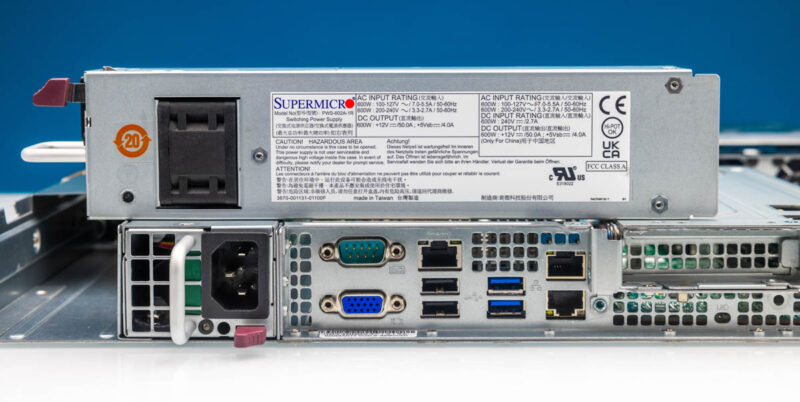
At idle, the Intel Xeon E-2488 saw package power consumption at only 5.9W which gave us 45W power consumption at the wall.
When we pushed the system up to a maximum 100% load we saw 170W package power and 232W at the wall. This is roughly 2x a Xeon E3 system albeit with 2x the core count and higher performance per core. That level of power consumption is only the initial burst. Modern systems allow CPUs to hit higher power levels to heat soak the platform before pushing clocks towards a more sustainable load pattern.
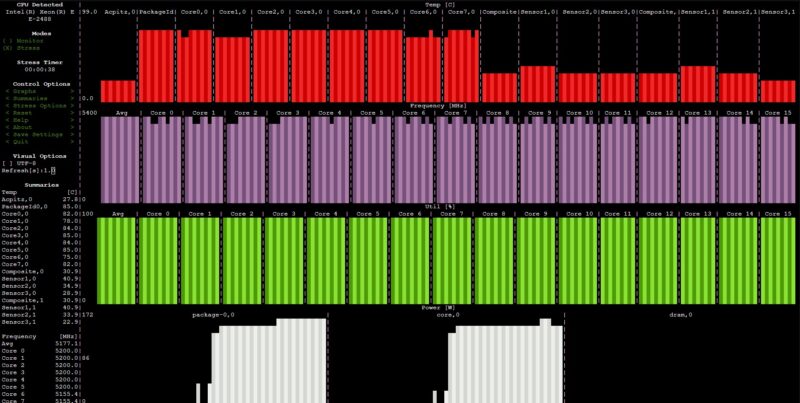
That longer-term load pattern was 95W package power consumption and 155W at the wall.
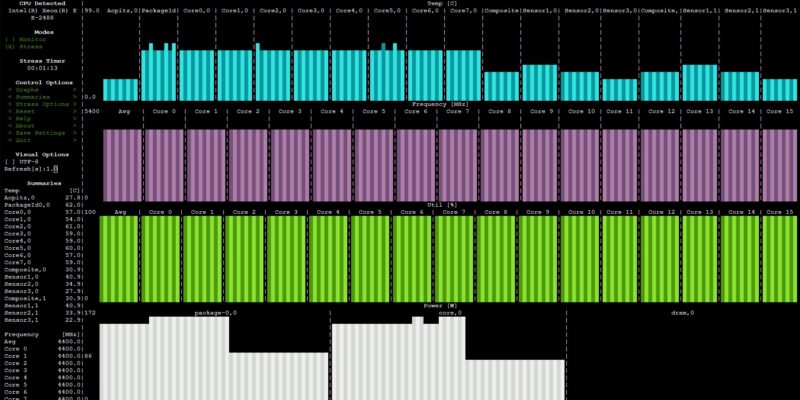
In previous generations of Xeon E3-1200 V1-V6 and some of the Xeon E-2100/ Xeon E-2200 series parts, the series was fairly safe to stay under the 120W (1A 120V) per U of power found at super inexpensive hosting shops. Now, that would likely require stepping down the CPU or setting some platform power limits.
In many ways, that power level feels silly, being ~50W higher in generations while we see AI servers happily use 2kW+ more power per node in each generation. Still, for budget hosting, and also for places where power is extremely expensive, those folks will take note of the power consumption increase in this platform over what they may have been accustomed to.
STH Server Spider: Supermicro SYS-511R-M
In the second half of 2018, we introduced the STH Server Spider as a quick reference to where a server system’s aptitude lies. Our goal is to start giving a quick visual depiction of the types of parameters that a server is targeted at.
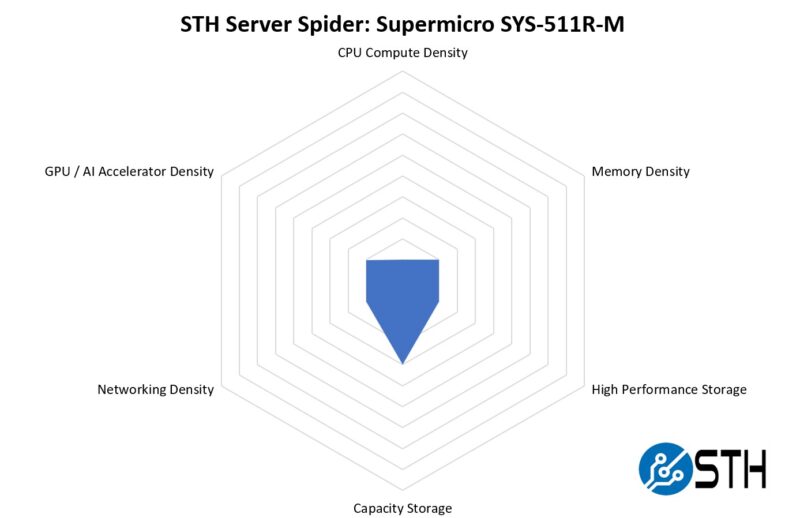
Built around a Raptor Lake processor and a C266 chipset, the Supermicro SYS-511R-M is designed to have a lower-cost price point to servers. It is not trying to maximize the number of NVMe SSDs, be an 8-way GPU server, have terabytes of memory, and so forth. Instead, it is designed to be a low-cost node, which is what it does.
Final Words
At STH, we have been reviewing the Xeon E series for well over a decade and at least 10 generations at this point. In almost every generation, we have looked at the line in a Supermicro server. Even with that, we still found some really cool new features that if you are upgrading from older generations, will be exciting. One example was this offset CPU heatsink that allows Supermicro to offer a dual PCIe Gen5 expansion slot solution.
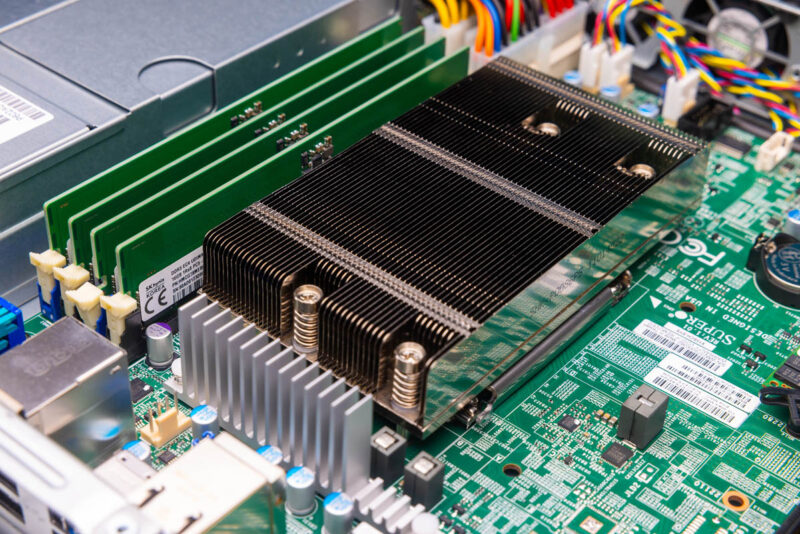
Another really good example is this internal HBA card slot that requires a motherboard design and a chassis mounting point to pull off without expensive cables. If you closely follow servers, this is a really cool design point of the SYS-511R-M.
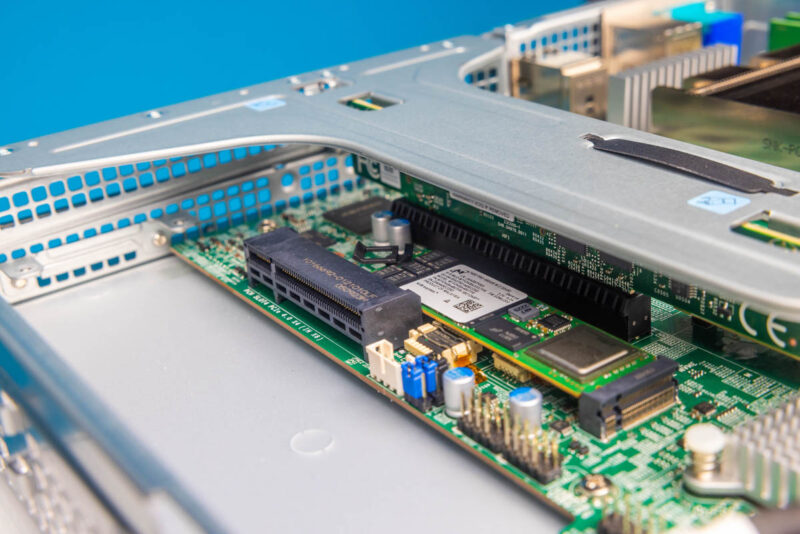
Supermicro sells lots of these Xeon E servers every year, and small touches like these show how they are tailoring the entry-level server platform for both cost optimization as well as flexibility goals.




Current prices for 10 gigabit Ethernet and the limited expansion possibilities in a 1U chassis suggest systems like this should have something faster than built-in 1 gigabit Ethernet.
This server has a ton of neat little features and is very similar to the current gen of DELL 1RU servers ala R350. Love the offset CPU cooler.
Required throwaway comment: Latch that DIMM!
E3-V5/6 generation seems to be where technology peaked in terms of low idle power consumption. I have measured less than 11W at the wall with my X11SSH-LN4F (that’s for the whole system, albeit with not much attached).
Strangely, for simple homelab setups in countries where electricity is not cheap, these new boards are less desirable than the old ones.
@TurboFEM: That’s what I’m thinking, too. It looks like these days you need to go with one of these E-cores-only platforms (e.g. i3 N305) to achieve similar results, but the tradeoffs you’ll have to accept on the other hand do hurt – no ECC, limited number of PCIe lanes which are also only gen 3.
Maybe it can be accomplished with the Xeon E-2400 platform and ASPM/C-state optimisation, too?
This could be such a good platform for a home server in countries with high electricity costs…
@Patrick: What’s the noise @idle like? Do the fans ramp down enough to make it somewhat bearable?
? With ~6W on the ATX 12V cable, most of your idle power is probably being consumed by the 8 fans. Other components likely draw a bit more vs. Haswell/Broadwell: DDR5, PCI-e v4 SSD, chipset… but not that much (if you select the right SSD). The Raptor Lake is fast, but active power consumption compares poorly with (e.g.) the R7 7700, and it still has AVX-512 disabled. (As far as noise, you can build a silent machine, but naturally it takes some effort.)
The 8-core E-2300’s suffer seriously from thermal throttling which can reduce clock speeds down to as low as 3.8GHz all core, it’d have been interesting to see the E-2400 burst-temps test run for 5 minutes to see what clock speeds they settle at.
The air shroud is a necessary improvement in this system but I’m still sceptical as more air doesn’t solve the problem of poor dissipation from the IHS itself.
Do you still have the system to be able to demonstrate that?